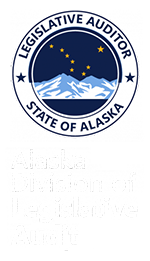| SUMMARY OF: | A Sunset Review of the Department of Natural Resources, Alaska Seismic Hazards Safety Commission, October 22, 2004 |
Purpose of the Report
In accordance with Title 24 and Title 44 of the Alaska Statutes, we have reviewed the activities of, and circumstances surrounding, the Alaska Seismic Hazards Safety Commission (ASHSC). As required by AS 44.66.050(a), the legislative committees of reference are to consider this report during the legislative oversight process involved in determining if the commission should be reestablished. Currently, AS 44.66.010(a)(21) states that the commission will expire on June 30, 2005. If the legislature does not extend the termination date for the commission, ASHSC will have one year to conclude its administrative operations.
Report Conclusions
Under state law, the burden of demonstrating a continuing public need for a given board, commission, or agency that is subject to termination rests with the entity subject to sunset review [1]. Accordingly, since the commission has not been active since it was created in 2002, it is difficult to make the argument there is a demonstrated public need for the commission’s termination date to be extended.
Since there is no functioning commission, we recommend that the legislature not extend the termination date of the commission. By not extending the termination date, the commission will have one year to administratively conclude its operations, and will cease to exist at June 30, 2006.
When the commission was created it received overwhelming support from the legislature. Additionally, other western states that are prone to earthquakes have created boards and commissions with duties similar to that of ASHSC. If there is legislative interest in continuing the commission, we offer a recommendation regarding ASHSC’s composition that would enhance its operational effectiveness.
Findings and Recommendations
Recommendation No. 1
The legislature should consider, if it extends the termination date of the Alaska Seismic Hazards Safety Commission, altering the composition of the board to provide more representation of local government.
Much of the testimony heard in support of the commission’s enabling legislation stressed the importance of communicating policy and possible mitigation measures that could be taken by all levels of government. A major area of concern involved the development of local community zoning ordinances and building code requirements to minimize the impact that the seismic shock would have on residential, government, and commercial buildings.
We contacted numerous local government building officials in the State regarding how the recommendations of the Alaska Seismic Hazard Safety Commission could be put in place through local building codes. Most communities have a building code advisory commission that makes recommendations about local construction codes. A modification of the code generally involves making local exceptions to the “standard” code, which most communities have adopted by reference.
The commission would benefit from additional representation by local government for two primary reasons:
- The mitigation of seismic hazards refers to studying, identifying, and prioritizing actions that could be taken to reduce the impact of earthquakes. The most cited tangible mitigation measure has been modification of zoning and building codes. Accordingly, the actual implementation of many of the commission’s earthquake mitigation recommendations would have to be done by local governments. Having local representatives as part of the commission may facilitate the implementation of the commission’s recommendations.
- Many local governments adopted the International Building Code (IBC) and have, therefore, already been involved in deciding if they believe it is in the public’s interest to update local codes in conformity with IBC changes. Having more local government members would bring, to the commission, a sense of the local concerns about adding or modifying existing local ordinances for improved earthquake mitigation factors.
Footnote: 1 – AS 44.66.050(b) states
During a public hearing, the board, commission or agency shall have the burden of demonstrating a public need for its continued existence or the continuation of the program, and the extent to which any change in the manner of exercise of its functions or activities may increase efficiency of administration or operation consistent with the public interest. [emphasis added]

